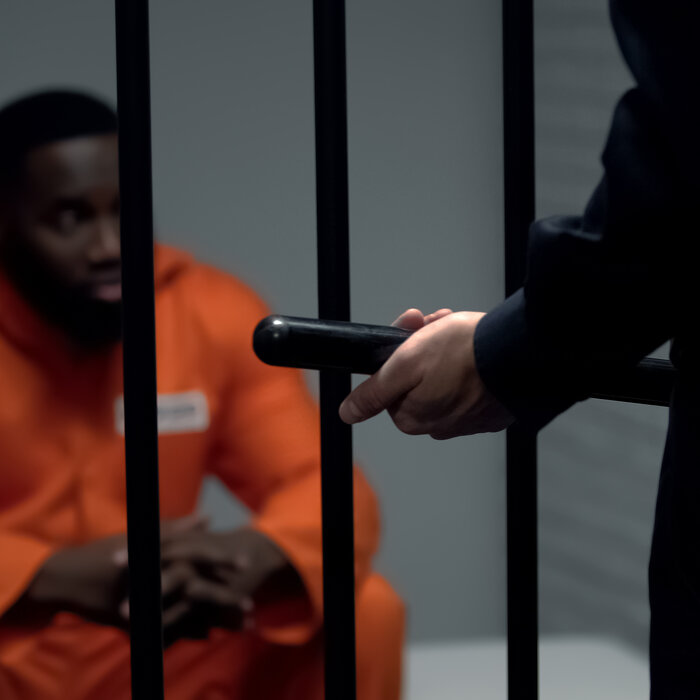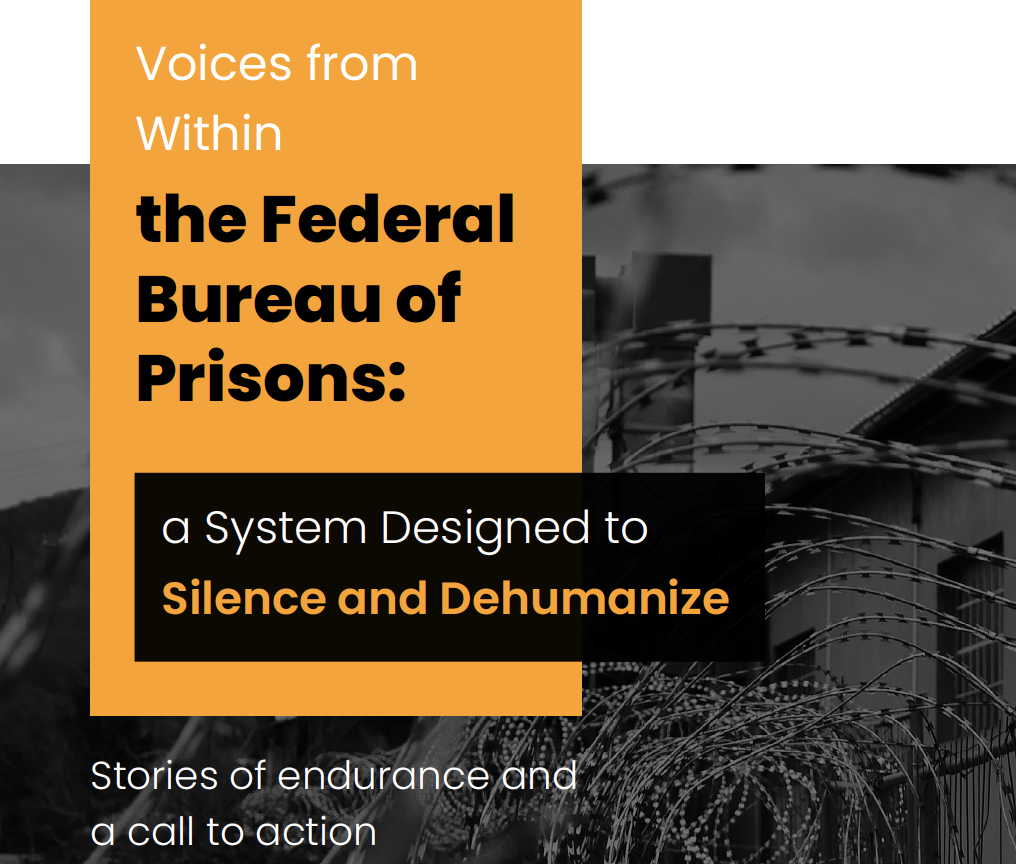Prison walls have two purposes: to keep people in and prevent the world from seeing a system that is mired in abuse and scandal. Few people other than those who are confined or work in prisons can get a full view of how they operate.
However, a new report produced by More Than Our Crimes and the Washington Lawyers Committee on Civil Rights and Urban Affairs, changes that by compiling first-person accounts from inside the BOP. These accounts document that corruption, abuse and neglect are rampant throughout the network of 122 institutions. The reality that emerges is a system oriented around punishment and warehousing instead of active rehabilitation, aggravated by a culture of “us vs. them” that has been allowed to run amok by a lack of both internal and external accountability. Here are just a few of the stories featured in detail in the report, “Voices from Within: Stories of Endurance and a Call to Action.” Read the full report for more; each one is important.
Unhealthy living conditions
Wesley Todd: Black mold filled the HVAC system at Yazoo City-Low Security, Mississippi, when I was there. Everybody hacked and sneezed constantly. Plus, sewage water flowed unrestricted into our living area from the showers. Staff dismissed it as “only” shower water, but you have to understand how many men use the shower and the things that happen there; it’s sewage. The flow was so steady and constant that staff built a foam barrier under the water fountain to contain it. They’d vacuum it out a few times a day, as well as try to soak it up with blankets. Staff called them flood blankets and the laundry team issued them to the dorms daily. Standing water covered the floor all day long, and we tracked sewage into the cells and all over.
Neglected medical care
Jeffrey Cohen: In January 2018, an X-ray of my back performed at the medium-security prison in Hazelton, West Virginia. It showed I suffered from “multilevel degeneration,” which worsened several months later when I was confined to the SHU [Special Housing Unit, or solitary confinement] for 60 days in retaliation for a grievance I had filed. I was deprived of a mattress for two months and forced to sleep on a steel slab. No treatment was provided.
It wasn’t until October of 2019, after I was transferred to another federal prison in West Virginia (Gilmer), that I was seen by Medical for my pain—for all of three minutes. I received no help. Despite additional requests, I was not seen by a nurse until a year later, in October 2020. A CT scan diagnosed spinal stenosis and neuroforaminal narrowing on both sides. A consult with a neurosurgeon within 30 days was recommended but did not occur.
When I was seen by the prison doctor in January 2021, I was given only Tylenol. In response, I filed a medical negligence claim. On April 15 of that year, 20 months after the CT scan, an MRI was finally ordered, which was completed in July 2021. Once again, a neurosurgery consult was recommended, but not received.
I have continued to ask for a visit with a neurosurgeon, but to this day I am still waiting and receive nothing but over-the-counter medication for my debilitating pain.
Denial of mental health care
Arthur Bowlson: I entered prison in 2004 with documented mental illness, yet I’ve only had three psychiatric evaluations: one in 2004 upon entry, another one in 2011 and the third (court-ordered) in 2020. They all concluded that I have clinical conditions that warrant antipsychotic medication and a treatment plan. The court-selected psychiatrist from Tulane University, retained as part of my compassionate release hearing, determined that I have antisocial, borderline and narcissistic personality disorder. He recommended dialectic behavioral therapy (a program available at the prison). In the two years since then, I have not been given any medication and have not been enrolled in the recommended program.
The one improvement since then is shorter stays in the restrictive housing unit. In my compassionate release ruling, the judge wrote, “Mr. Bowlson has repeatedly been placed in solitary confinement and his treatment notes show that he reports more mental health problems during these times. Such measures are not only ineffective in correcting behavior in individuals with severe mental illness, they have been found to worsen already debilitating conditions, as evidenced by the United Nations’ classification of solitary confinement as torture. Rehabilitation is a two-way street; it requires the full cooperation and positive investment of both the patient and provider.”

Abuse by prison staff
Derek Roberts: I was placed in solitary confinement at USP Big Sandy (Kentucky). During the more than 60 days I spent there, I witnessed officers casually participate in all kinds of random acts of misconduct, even in the presence of executive staff. For example, guys were placed in four-point restraints, screaming at the top of their lungs for over eight hours. That’s because officers intentionally tightened the restraints so much that the iron cuffs cut off the blood circulation in the arms and legs. Other times, I witnessed a lieutenant open the cell-door slot and shoot a guy 10 to 15 times with a pepperball gun because he was having a seizure or mental health issue.

Retaliation for speaking up
Justin Johnson: Not only do grievance forms routinely “get lost,” they are ignored and even laughed at, even though the proof to support the claims is often evident. Staff often look out for each other. Your BP-8 (the initial complaint) will conveniently get lost; you can put it in the institutional mail or hand it to the administration, but it is easy for them just to say they lost it. A lot of things are purposely not investigated because they can’t be tracked when it’s paper. And then if your grievance gets to the regional office, they often find a way to default you for not following the proper procedures. For example, “You didn’t sign this, there’s no copy of that, get staff to confirm this…” And then, ultimately, “You didn’t file everything on time.”
Call to action
These human rights abuses can occur because the FBOP operates with no real accountability, allowing the prisons to operate in the darkness and shadows. Independent and robust oversight is essential to shining a much-needed bright light on the noxious conditions behind the walls of FBOP prisons. Thus, the report recommends that:
- Congress create an independent body with oversight authority, located within the executive branch, but external to the FBOP.
- The grievance process be overhauled by:
- Replacing the paper-based system with a safe, online channel that cannot be seen/decided upon by the same people who are the subjects of the complaint.
- Repealing the Prison Litigation Reform Act, which prevents incarcerated people from going to the court until the internal grievance process is exhausted.
- Establishing an ombudsman’s office in each facility to accept, investigate and resolve grievances.




